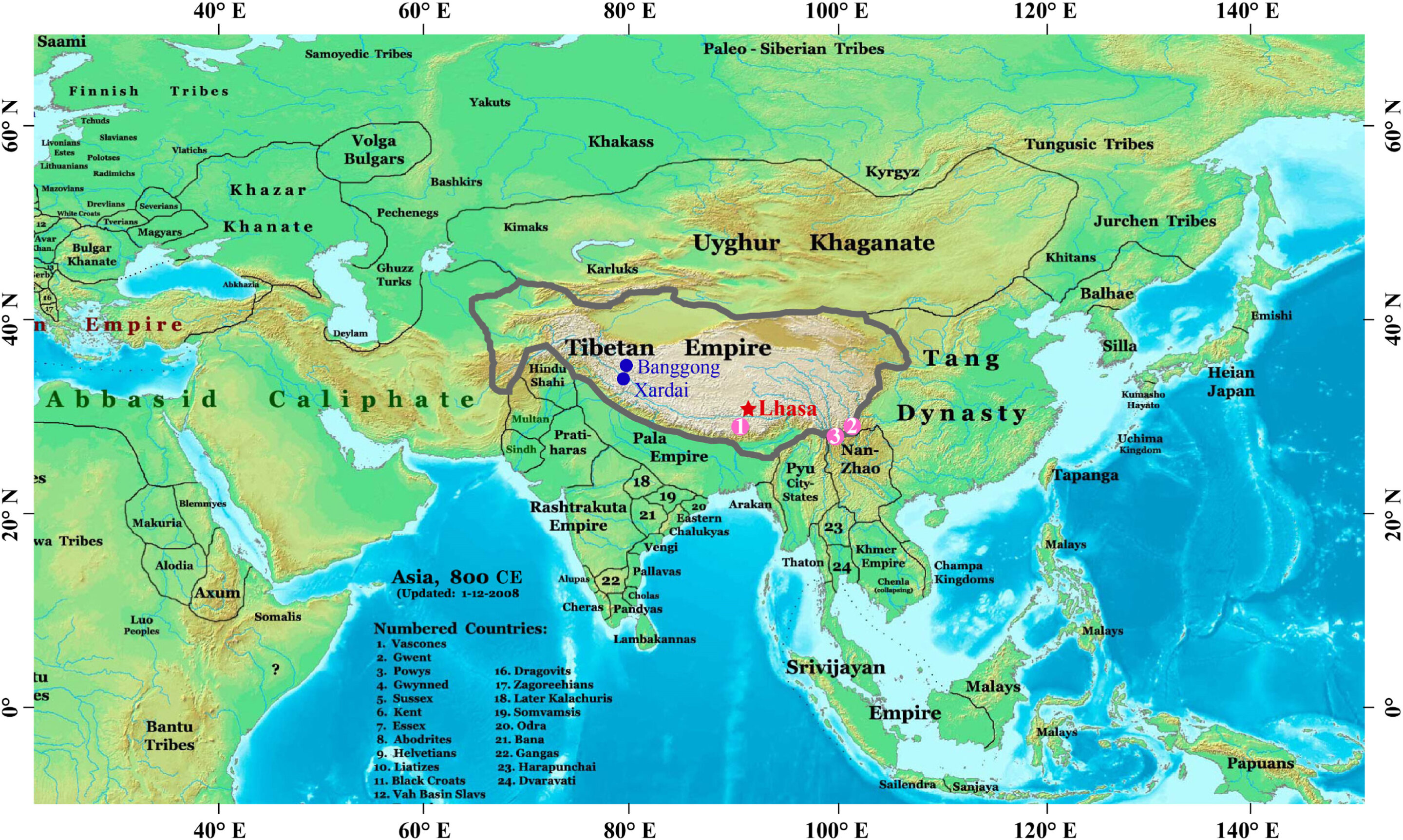The Tibetan Empire was the world’s highest elevation empire, sitting over 4,000m above sea level, and thrived during 618 to 877 CE. Home to an estimated 10 million people, it spanned approximately 4.6 million km2 across East and Central Asia, extending into northern India.
Considering the hostile conditions for populations to expand, including hypoxia where oxygen concentrations are 40% lower than at sea level, it is incredible that the empire flourished. However, its collapse in the 9th century is not fully understood, with new research published in Quaternary Science Reviews aiming to untangle the role climate may have played in the end of a great civilization.
Zhitong Chen, from the Institute of Tibetan Plateau Research, China, and colleagues turned to the geological record of lake sediments (paleolimnology) to determine how the environment changed 12 centuries ago. Xardai Co’s freshwater lake sediments preserve the remains of microscopic single-celled algae known as diatoms, with the research team noting a significant change from planktonic varieties (those drifting within a water body, generally nearer to the surface) to benthic forms (living near the lake floor). This is interpreted as representing a shift to drier conditions, therefore lowering lake levels.
There is a distinct pattern of high lake levels, suggesting warm and humid conditions prevailed during the rise and peak of the Tibetan Empire ca. 600-800 CE, before conditions intensified to severe drought, coinciding with the empire’s collapse ca. 800-877 CE. Chen and collaborators link drought with the likelihood of crop failure leading to social unrest among the population, alongside religious and political challenges, thus consequently the empire’s demise.
The Tibetan Plateau is extremely sensitive to changes in climate due to its elevation, with temperature and precipitation fluctuations varying significantly from the average experienced across Earth. The study lake, Xardai Co, is typically ice covered today from November to April, but experiences local temperature shifts between –12.1°C and 14.1°C, as well as 71mm annual rainfall. These factors have important consequences on lake levels and therefore the organisms that live within them.
2023-09-06 22:48:03
Original from phys.org





















